Imagine entering a space where every detail feels intentional, and comfort, style, and function blend seamlessly. The atmosphere is inviting, and every element reflects your unique taste.
This essential 2025 handbook unlocks the secrets of inside room design. You will find practical strategies and fresh inspiration, making it easy to transform any room into a beautiful, livable retreat.
Ready to elevate your interiors? Discover the latest trends, step-by-step planning guides, expert tips, and smart solutions that empower you to create stunning spaces—no matter your budget or square footage.
The Evolution of Inside Room Design: Trends for 2025
Inside room design is experiencing a dynamic transformation in 2025, shaped by shifting lifestyles, environmental awareness, and rapid technological growth. Today’s interiors are more than visually pleasing; they reflect homeowners’ values and adapt to ever-changing needs.
Sustainability leads the conversation in inside room design. Homeowners now prioritize eco-friendly solutions, choosing recycled woods, low-VOC paints, and upcycled furnishings. These materials offer both style and a reduced environmental footprint.
Biophilic design continues to gain momentum. Incorporating living walls, indoor gardens, and organic shapes brings nature indoors, promoting wellness and calm. This approach to inside room design not only enhances aesthetics but also supports mental and physical well-being.
The demand for multifunctional spaces is higher than ever. With remote work the new norm, inside room design strategies now focus on rooms that seamlessly transition between work, relaxation, and entertaining. Flexible layouts, modular furniture, and clever storage make these transformations effortless.
Technology is woven into the fabric of modern inside room design. Smart lighting, voice-activated controls, and energy-efficient appliances are standard features. These innovations boost convenience and sustainability, making everyday life smoother.
Color and pattern trends for 2025 reflect a desire for warmth and individuality. Expect to see warm neutrals, earthy tones, and bold accent walls, along with maximalist prints that add vibrancy and personality to any space. These choices allow inside room design to become a true expression of personal style.
Homeowners are also navigating the balance between minimalism and maximalism. Some prefer clean lines and simplicity, while others embrace layers of color, pattern, and decor. The following table summarizes the key differences:
| Style | Characteristics | Popular Elements |
|---|---|---|
| Minimalism | Clean lines, uncluttered, neutral hues | Sleek furniture, open space |
| Maximalism | Bold colors, mixed patterns, curated collections | Gallery walls, layered textiles |
Recent data highlights these shifts. Houzz and Pinterest reported a 34% rise in searches for “sustainable interiors” and “multifunctional rooms” in 2025. This surge underscores how inside room design is evolving to meet both practical and aspirational goals.
For a deeper exploration of these trends and actionable strategies, visit the 2025 Interior Design Guide, which offers expert insights and inspiration for every stage of your design journey.
Inside room design in 2025 is ultimately about intentional living. Whether you seek a calming retreat or a vibrant social hub, the year’s trends empower you to create a space that is both beautiful and functional.
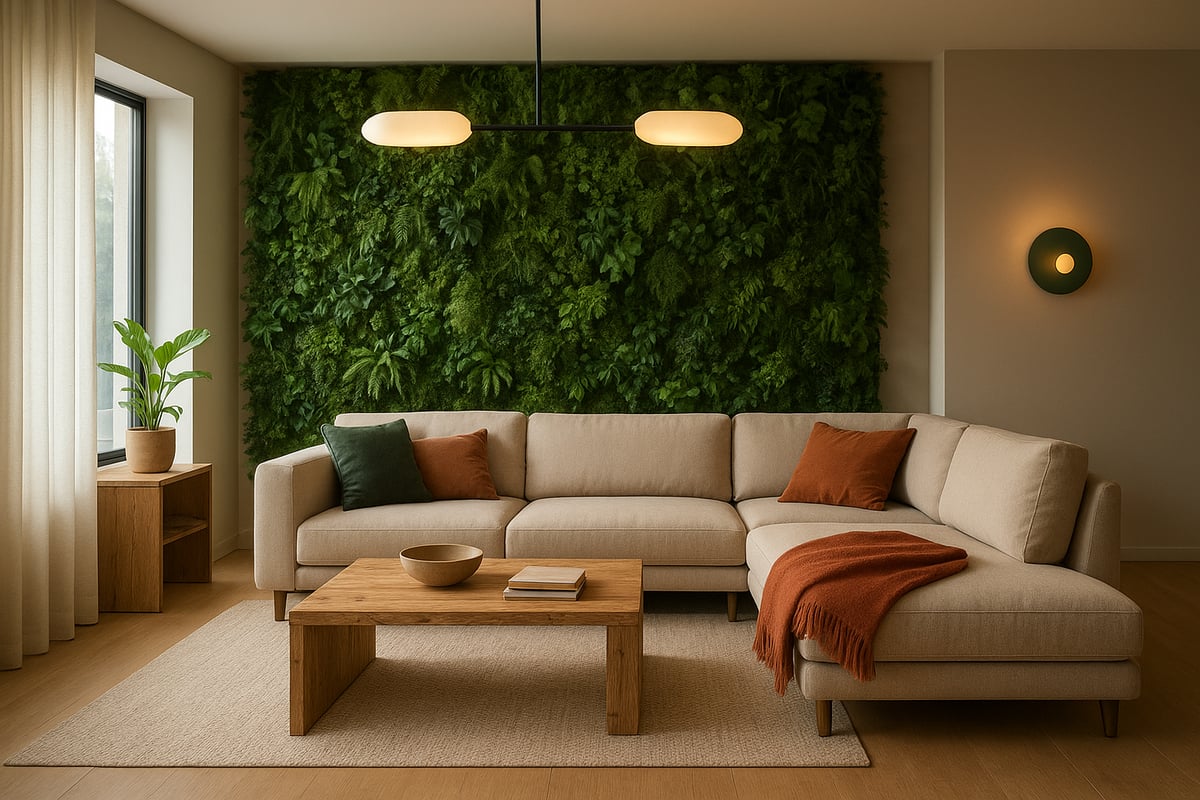
Step-by-Step Room Design Planning
Embarking on an inside room design project can feel overwhelming, but a clear, methodical approach makes all the difference. This step-by-step guide empowers you to turn ideas into reality, whether you're redesigning a single room or transforming your whole home. Each stage builds a strong foundation for creating interiors that are functional, stylish, and uniquely yours.

Assessing Your Space and Needs
Every successful inside room design project begins with a thorough assessment of your space. Start by measuring each wall, window, and architectural feature. Accurate dimensions are crucial for planning layouts and sourcing furniture that fits perfectly.
Identify pain points such as insufficient storage, poor lighting, awkward layouts, or limited flow. Make a list of what works and what needs improvement. Consider the room’s primary function, like living, dining, or sleeping, and any secondary uses, such as a workspace or play area.
Gather inspiration to clarify your vision. Create moodboards using magazine clippings, digital templates, or design apps. Digital tools, including 3D room scanning apps, allow you to visualize potential changes in real time. For curated templates and visual inspiration, explore Interior Moodboard Templates to jumpstart your creative process.
Assessing your needs and space thoughtfully sets the tone for a seamless inside room design journey.
Setting a Realistic Budget
A well-planned budget is the backbone of any inside room design. Begin by determining your top priorities. Decide where to allocate more funds, such as a high-quality sofa or custom cabinetry, and where to save, like on decorative accessories.
Understand key cost drivers, including materials, labor, and whether you choose custom or ready-made pieces. Always include a contingency fund for unexpected expenses, which are common in home projects.
For context, a 2024 survey found the average living room redesign costs between $5,000 and $15,000, depending on scope and finishes. By setting a practical budget upfront, you ensure your inside room design remains on track and stress-free.
Creating a Design Concept
Defining your inside room design concept is where creativity meets strategy. Choose a style that reflects your taste, such as modern, classic, or eclectic. Select a color palette and material scheme that harmonizes with your home’s architecture and your lifestyle.
Balance current trends with timeless elements to ensure your space feels fresh yet enduring. For 2025, popular palettes include sage green, terracotta, and soft blue, offering a soothing yet contemporary vibe.
Use visual references to refine your vision. Moodboards, color swatches, and sample materials help you visualize how different elements interact. Anchoring your inside room design in a clear concept streamlines all future decisions and prevents costly mistakes.
Sourcing Furniture and Decor
Choosing the right furnishings is a pivotal step in inside room design. Evaluate each piece for quality, comfort, and scale to ensure it fits the space and your needs. Mix vintage and new items to add character and depth.
Embrace sustainable shopping by considering local artisans, secondhand finds, and eco-friendly brands. Modular sofas and multi-use furniture are in high demand, offering flexibility for evolving lifestyles.
When sourcing decor, pay attention to the details. Textiles, lighting, and accessories should complement the overall design without overwhelming the room. Thoughtful sourcing elevates your inside room design and ensures longevity.
Planning Layout and Flow
Strategic layout planning brings your inside room design to life. Map out traffic patterns to avoid bottlenecks and identify natural focal points, such as windows or fireplaces. Zoning the room for different activities helps maximize both comfort and functionality.
Use digital tools or simple graph paper to sketch multiple layout options. Open-plan living-dining arrangements are especially popular in urban apartments, enabling flexible use of space.
A well-planned layout not only enhances flow but also supports the daily rhythms of your household. Prioritizing these elements ensures your inside room design is both beautiful and practical.
Mastering Color, Materials, and Lighting
Every successful inside room design begins with a thoughtful approach to color, materials, and lighting. These core elements shape the mood, functionality, and visual appeal of any space. By mastering this trio, you can transform ordinary rooms into extraordinary environments that reflect your personal style and enhance daily living.
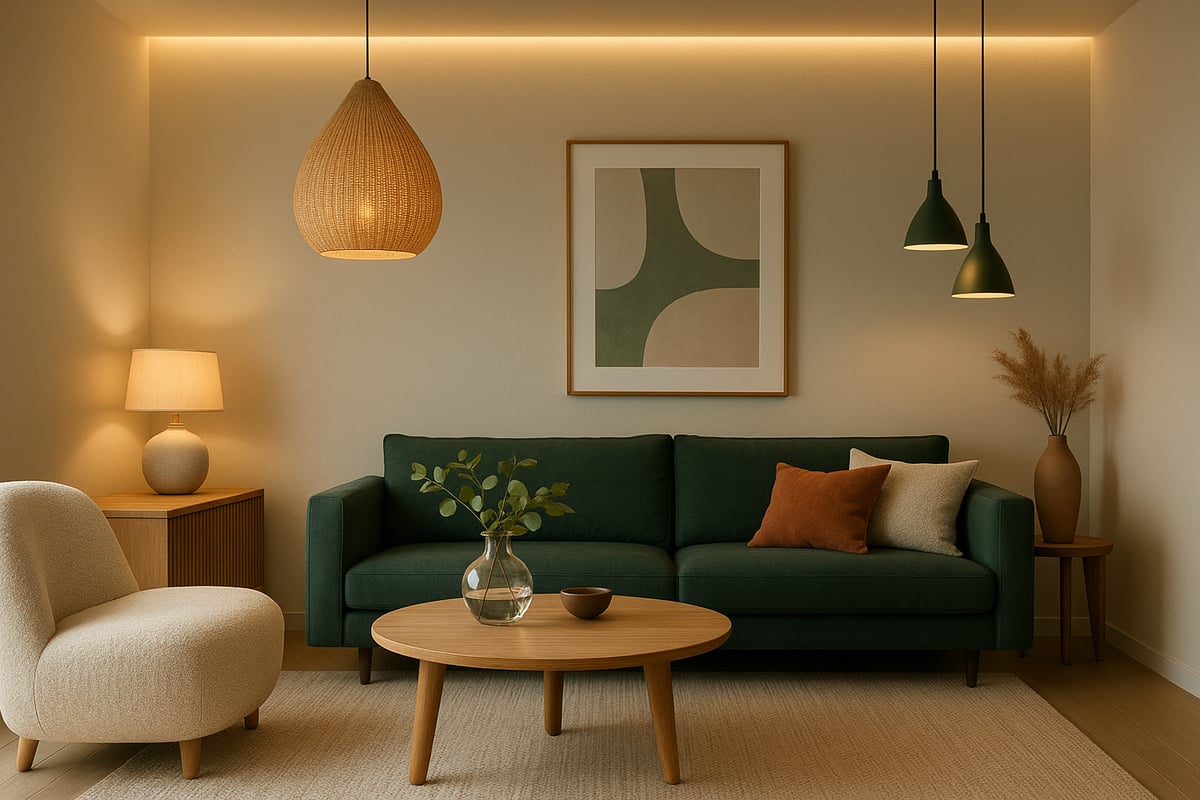
Choosing the Right Color Palette
Selecting the perfect color palette is foundational to inside room design. Colors influence mood and perception, making a room feel calm, vibrant, spacious, or intimate. For instance, soft blues and sage greens evoke tranquility, while terracotta and warm neutrals create coziness and warmth.
Begin by considering the psychological effects of color. Calming hues like pale green can reduce stress, making them ideal for bedrooms or relaxation zones. Energizing shades such as mustard or coral work well in creative spaces. Harmonize your wall, floor, and ceiling colors for a cohesive look in your inside room design. Accent walls or color blocking add depth and personality, drawing the eye to focal points.
In 2025, trends highlight deep greens paired with warm neutrals, reflecting nature-inspired palettes. For more on emerging color directions, see the 2025 Interior Design and Color Trends Report. Experiment with bold accent walls or subtle gradients to give your inside room design a unique edge.
Selecting Materials and Textures
The materials and textures you choose are essential for both the look and longevity of your inside room design. Mixing materials like wood, metal, textiles, and glass creates a rich, inviting atmosphere. Layering textures—think boucle upholstery with smooth glass or rough-hewn wood—adds depth and tactile interest.
Durability and maintenance should guide your selections. For high-traffic areas in inside room design, opt for easy-clean surfaces and robust fabrics. Sustainable materials are gaining traction, with bamboo, cork, and recycled glass offering eco-friendly alternatives. Below is a comparison of popular materials:
| Material | Durability | Sustainability | Maintenance |
|---|---|---|---|
| Bamboo | High | Excellent | Low |
| Cork | Moderate | Very Good | Low |
| Recycled Glass | High | Excellent | Medium |
| Boucle Fabric | Moderate | Good | Medium |
Textured wall panels and boucle upholstery are among the top trends for 2025, infusing inside room design with comfort and modern flair. Combine vintage and contemporary materials for a timeless yet fresh feel.
Lighting Design Essentials
Lighting is the finishing touch that elevates inside room design from functional to exceptional. A well-lit room enhances colors, emphasizes textures, and sets the right mood for any activity. Use ambient lighting for overall illumination, task lighting for focused work, and accent lighting to highlight art or architectural features.
Smart lighting systems are becoming standard in inside room design, offering flexibility and energy savings. Dimmable fixtures and LED strip lighting allow you to adjust brightness and color temperature to match your mood or time of day. Layering different types of light creates visual interest and supports various functions within the same space.
Consider incorporating programmable scenes that shift from bright, energizing light in the morning to soft, relaxing tones at night. This approach ensures your inside room design remains both beautiful and practical. Thoughtful lighting choices bring your vision to life, making every room feel inviting and complete.
Smart Layouts: Maximizing Space and Flow
Maximizing space and flow is at the heart of inside room design, shaping how a room feels and functions. A well-planned layout transforms even the smallest area into a welcoming, efficient environment. In 2025, adaptable layouts are more essential than ever, supporting flexible lifestyles and reflecting the latest 2025 Interior Design Trends Report.
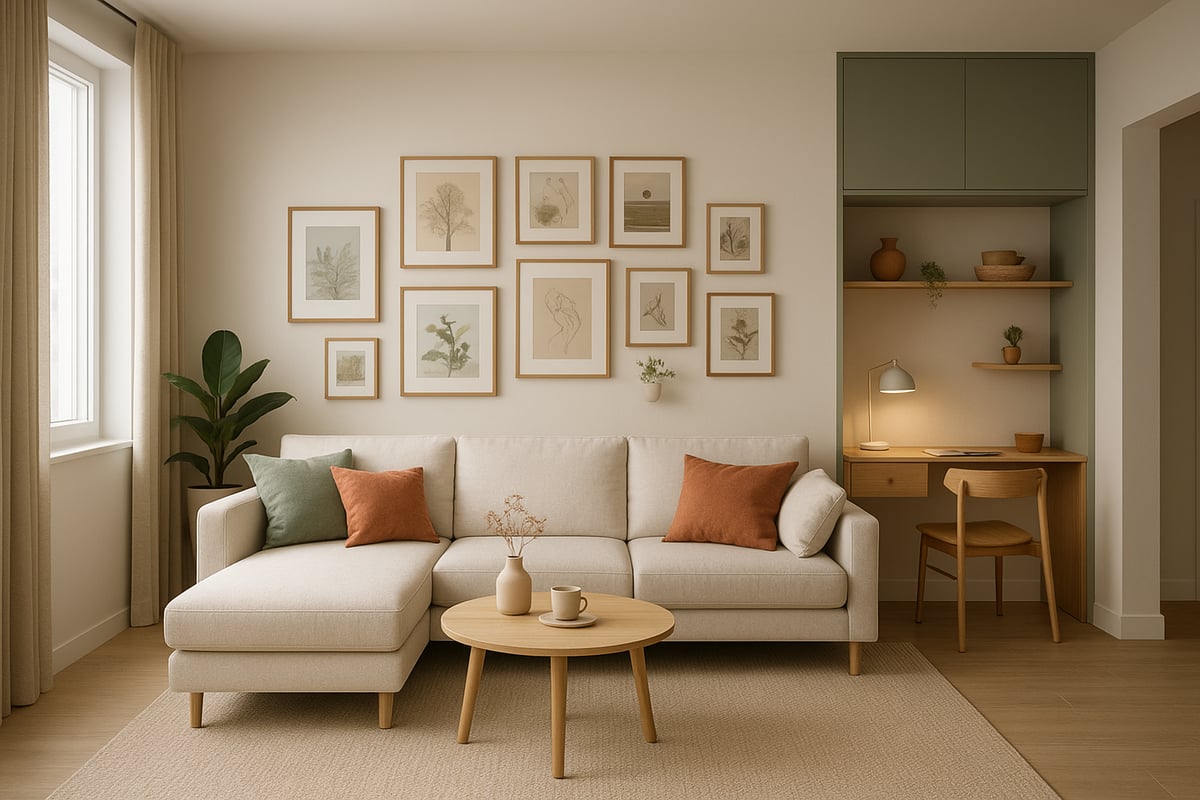
Zoning and Furniture Arrangement
Effective zoning is foundational in inside room design, especially in open-plan homes. Using rugs, shelving, and screens, you can visually divide areas for lounging, dining, or working without adding permanent walls.
Consider these zoning techniques:
- Place a large rug to anchor a seating area.
- Use open shelving units to separate spaces while allowing light to pass through.
- Position screens or tall plants to create subtle boundaries.
Furniture arrangement is equally important. Sectional sofas not only define lounge zones but also invite conversation and relaxation. Always leave clear walkways between furniture to encourage easy movement and maintain flow.
Digital tools can help you experiment with different layouts before committing. This ensures your inside room design supports every activity, from entertaining guests to unwinding after work.
Storage Solutions for Every Room
Smart storage is a hallmark of inside room design, keeping spaces clutter-free and functional. Built-in cabinetry maximizes vertical space in living rooms and bedrooms. Under-bed drawers are perfect for storing seasonal items.
Consider multifunctional furniture such as ottoman coffee tables with lift-up tops, or beds with integrated storage. For small rooms, wall-mounted shelves and hooks free up valuable floor area.
Decluttering regularly ensures only essentials remain visible. Hidden storage, like baskets tucked under benches, preserves a tidy, streamlined look.
Creating Focal Points and Visual Balance
A compelling focal point draws the eye and adds personality to your inside room design. Artwork, fireplaces, or bold statement furniture can serve this purpose.
Balance is key. Symmetrical arrangements, such as matching lamps on side tables, create order. Asymmetrical layouts, like a gallery wall with varied frame sizes, offer dynamic visual interest and reflect current trends.
Try these focal point ideas:
- Install a striking light fixture above the coffee table.
- Create a gallery wall with art and photos.
- Feature a fireplace or media unit as the room’s anchor.
Every element should contribute to harmony, ensuring the space feels both inviting and intentional.
Adapting Layouts for Different Lifestyles
Inside room design must adapt to diverse lifestyles. For families, designate play or study zones within shared spaces. Singles might prioritize open layouts for entertaining or relaxation.
Remote workers benefit from integrating a home office nook into the living area. Choose kid- and pet-friendly materials to ensure durability and easy maintenance.
Flexible layouts allow rooms to evolve as needs change, supporting both productivity and comfort.
Personalization and Decor: Infusing Character into Your Space
Personalizing your inside room design transforms a house into a home, reflecting your story and style. Thoughtful decor choices, from curated art to unique textiles, make every space feel intentional. Layering these elements ensures your interiors are more than just functional—they become expressions of personality and comfort.
Curating Art and Accessories
Curating art and accessories is a defining step in personalizing your inside room design. Begin by selecting artwork that resonates with your experiences or aspirations, whether it is a gallery wall of family photos or a statement canvas from a local artist. Display techniques matter: staggered arrangements, leaning frames, or sculptural objects on shelves can all create visual interest.
Layering is key. Combine vintage finds, such as mid-century clocks or antique vases, with modern pieces like sleek candleholders or abstract sculptures. This blend adds depth and tells a richer story. Consider using trays or books to cluster small objects, making displays feel intentional rather than cluttered.
For those seeking inspiration, Eclectic Interior Design Moodboards provide visual guides for mixing styles and personal touches. Thoughtful accessorizing ensures that your inside room design feels truly your own.
Textiles and Soft Furnishings
Textiles and soft furnishings are essential to inside room design, offering comfort and a canvas for creativity. Choose rugs, curtains, throws, and cushions that echo your color palette and introduce texture. Layering a bold patterned rug with a soft, oversized throw creates both warmth and visual appeal.
Patterns and seasonal swaps keep the space fresh. Try mixing geometric prints with organic textures—think boucle cushions or velvet drapes. In 2025, textured, oversized throws and statement rugs are trending, infusing rooms with energy and coziness. Rotate lightweight linens in summer and heavier knits in winter to adapt the mood throughout the year.
Select high-quality fabrics for durability, especially in high-traffic areas. Every textile choice in your inside room design should balance practicality with personality, ensuring a space that is both welcoming and expressive.
Plants and Greenery
Integrating plants and greenery elevates inside room design by enhancing air quality and infusing life into interiors. Indoor plants such as monstera, snake plant, and fiddle leaf fig are popular choices for their sculptural leaves and easy maintenance.
Benefits extend beyond aesthetics. Plants can boost mood, reduce stress, and soften architectural lines. For beginners or busy lifestyles, opt for low-maintenance species like pothos or ZZ plant, which thrive with minimal care.
Arrange plants at varying heights—on shelves, in hanging baskets, or as floor statements—to create layers of visual interest. Incorporating greenery is a simple yet effective way to refresh your inside room design and foster a calming, vibrant environment.
DIY and Customization Ideas
DIY and customization ideas offer a personal stamp on inside room design, making your space unmistakably yours. Upcycling furniture, such as repainting a tired side table or reupholstering a vintage chair, is both eco-friendly and budget-conscious.
Custom wall treatments add flair. Try painting an archway in a contrasting color or applying geometric decals for a modern twist. Handcrafted touches, like a macrame wall hanging or a set of hand-painted planters, infuse the room with individuality.
If you are drawn to eclectic combinations or want to visualize unique design blends, resources like Eclectic Interior Design Moodboards can spark inspiration. Embracing DIY and customization ensures your inside room design evolves with your tastes and tells your story in every detail.
Integrating Smart Technology and Sustainable Solutions
Smart technology is transforming inside room design, offering homeowners the tools to enhance comfort, convenience, and efficiency. By integrating the latest innovations, you can create spaces that are not only stylish but also highly functional. A well-planned approach ensures that technology elevates your environment without overwhelming your personal aesthetic.
Energy efficiency lies at the heart of modern inside room design. Today’s smart thermostats, energy-saving appliances, and automated lighting systems not only reduce utility costs but also support a healthier planet. Automated window treatments adjust to natural light, while security systems offer peace of mind. According to Smart Home Market Growth Statistics, smart home device adoption has risen 22 percent year over year, highlighting this growing trend.
Sustainability is a core value in 2025’s inside room design. Homeowners increasingly opt for solar panels, water-saving fixtures, and eco-friendly insulation to minimize environmental impact. These upgrades not only lower energy consumption but also contribute to a healthier indoor environment. When selecting materials, prioritize options like recycled glass, bamboo, and low-VOC paints to promote both sustainability and style.
Seamlessly integrating smart technology with your décor is essential for a cohesive inside room design. Consider concealed wiring, minimalist smart speakers, and wall-mounted control panels that blend with your chosen aesthetic. As artificial intelligence and design tools advance, homeowners can use data-driven insights to optimize layouts and personalize their spaces. The key lies in balancing innovation with timeless design, ensuring your home remains both current and comfortable.
As you explore the latest trends and practical steps in this essential room design guide, you might feel inspired to put your ideas into action and truly shape your space. Whether you are planning a full room transformation or simply want to refine your skills, investing in a strong foundation is key. If you are ready to take the next step and gain hands-on expertise in creating stunning interiors, you can start learning the principles and techniques that professionals use every day. Let your vision come to life—Get started with Interior Design.




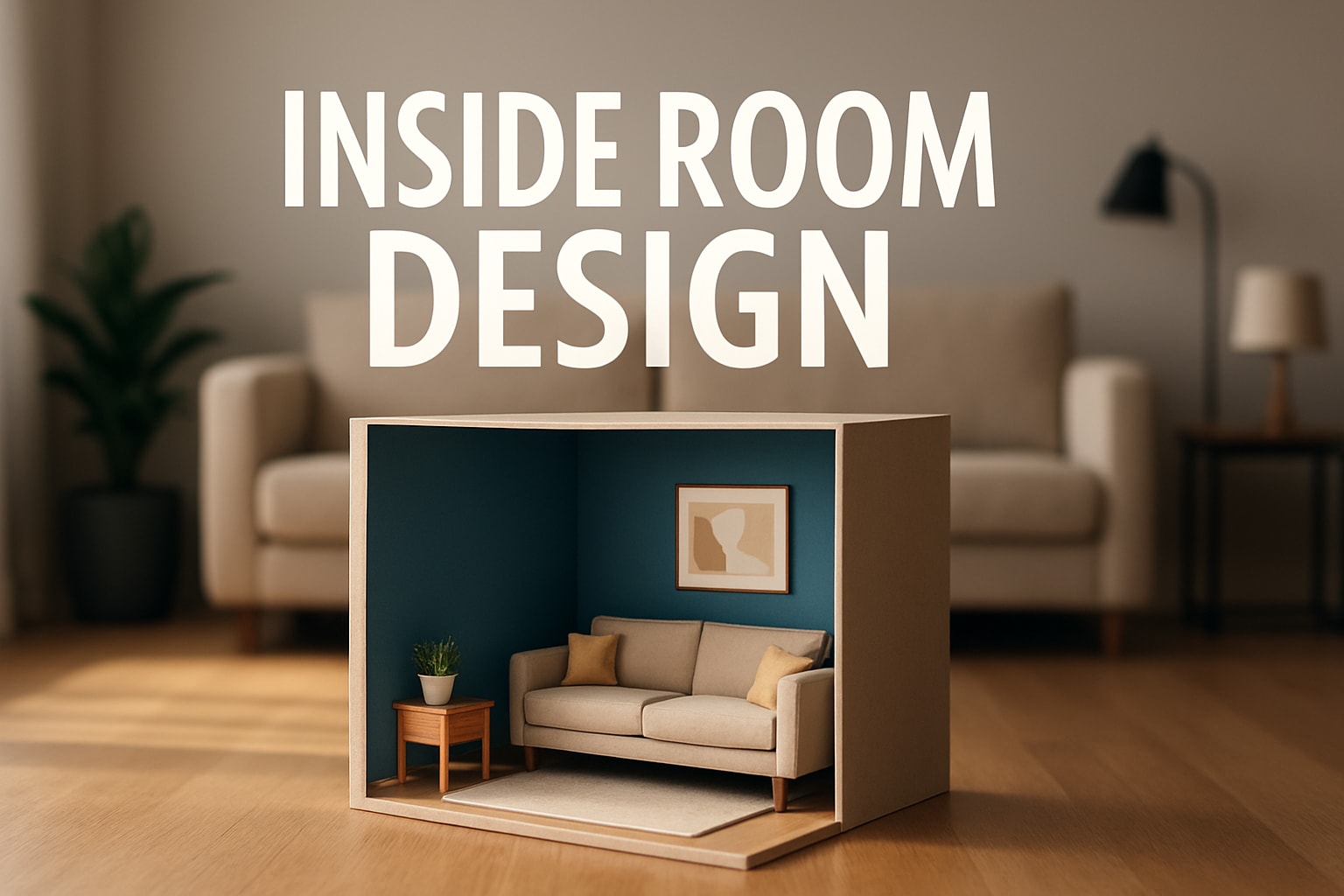
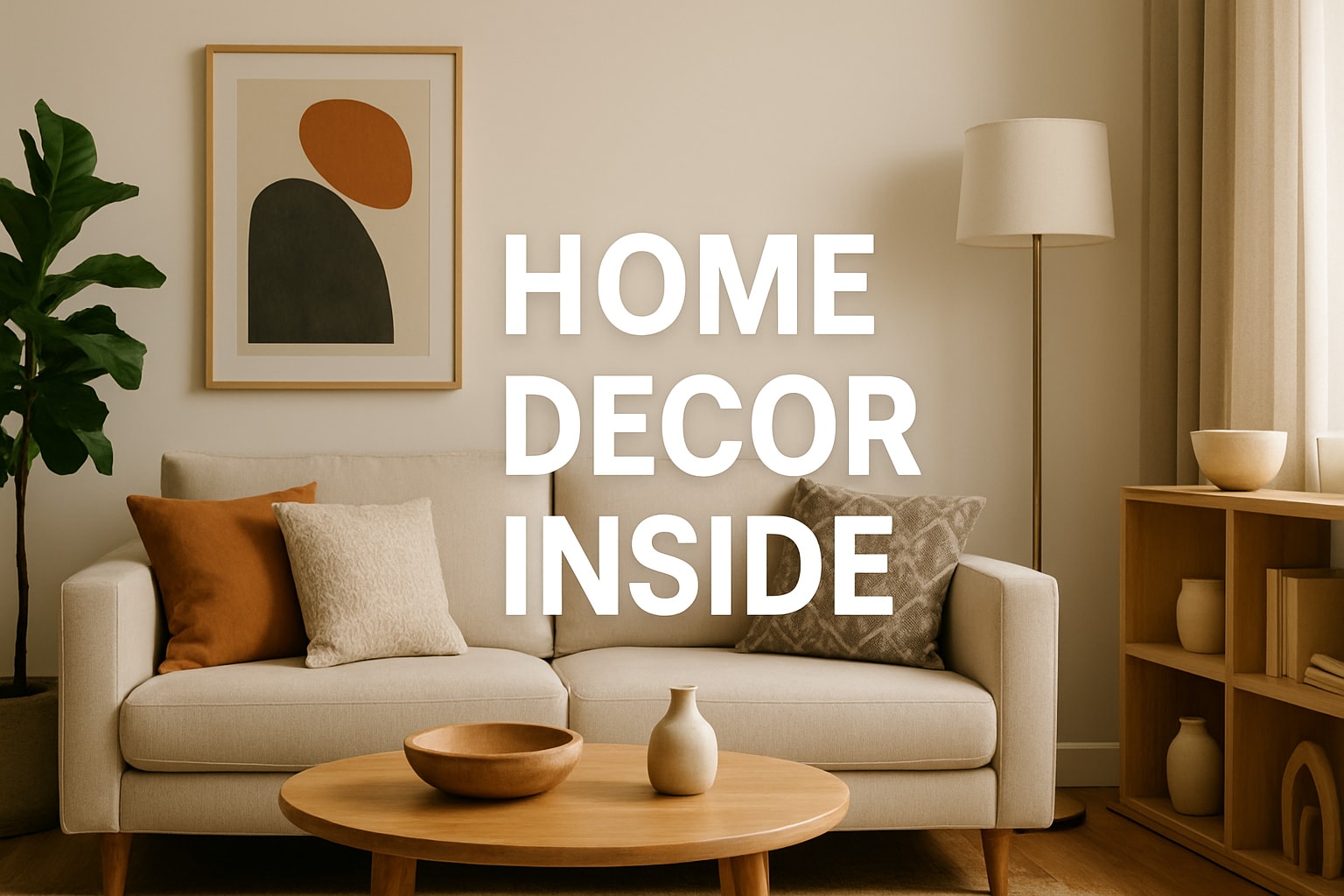
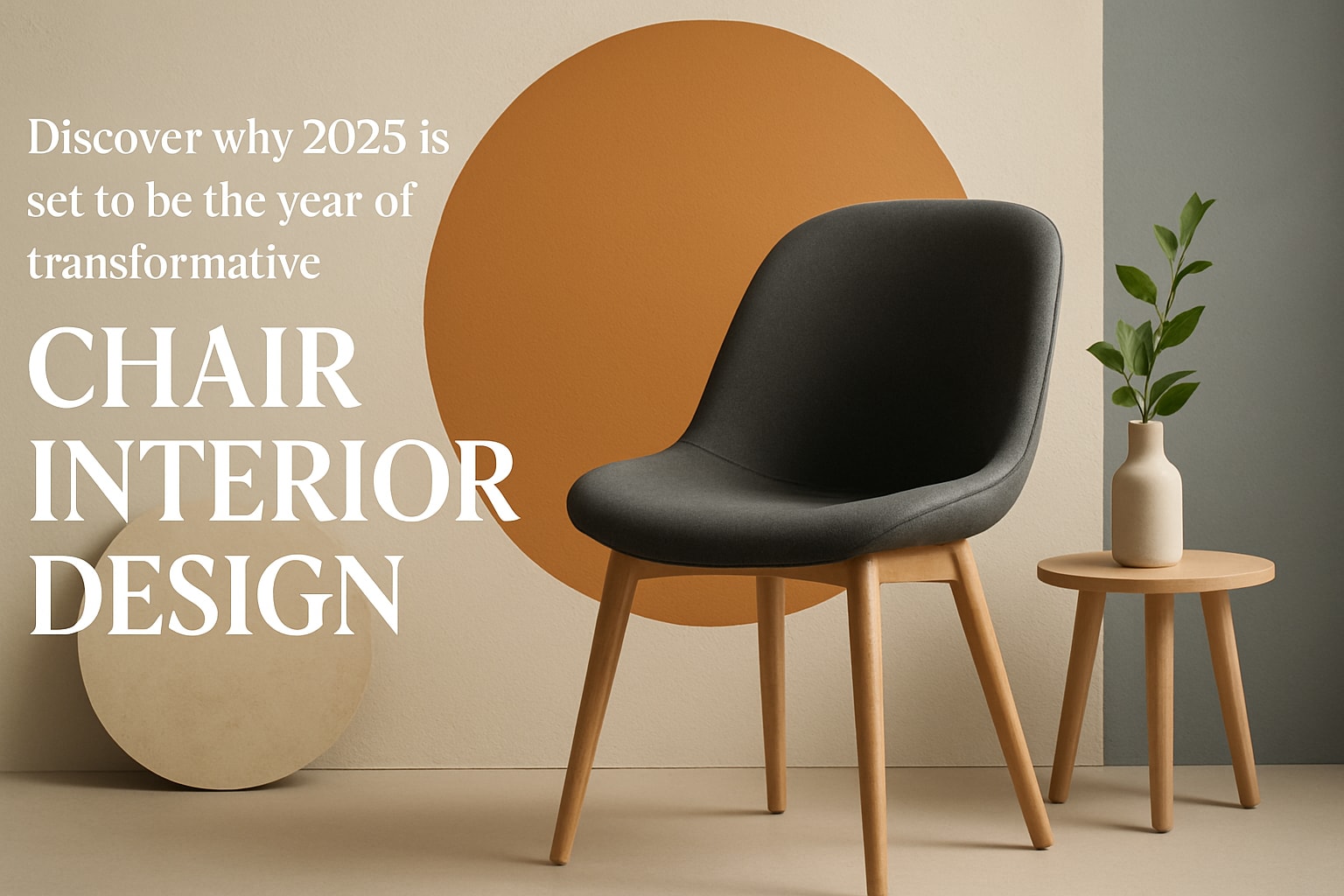
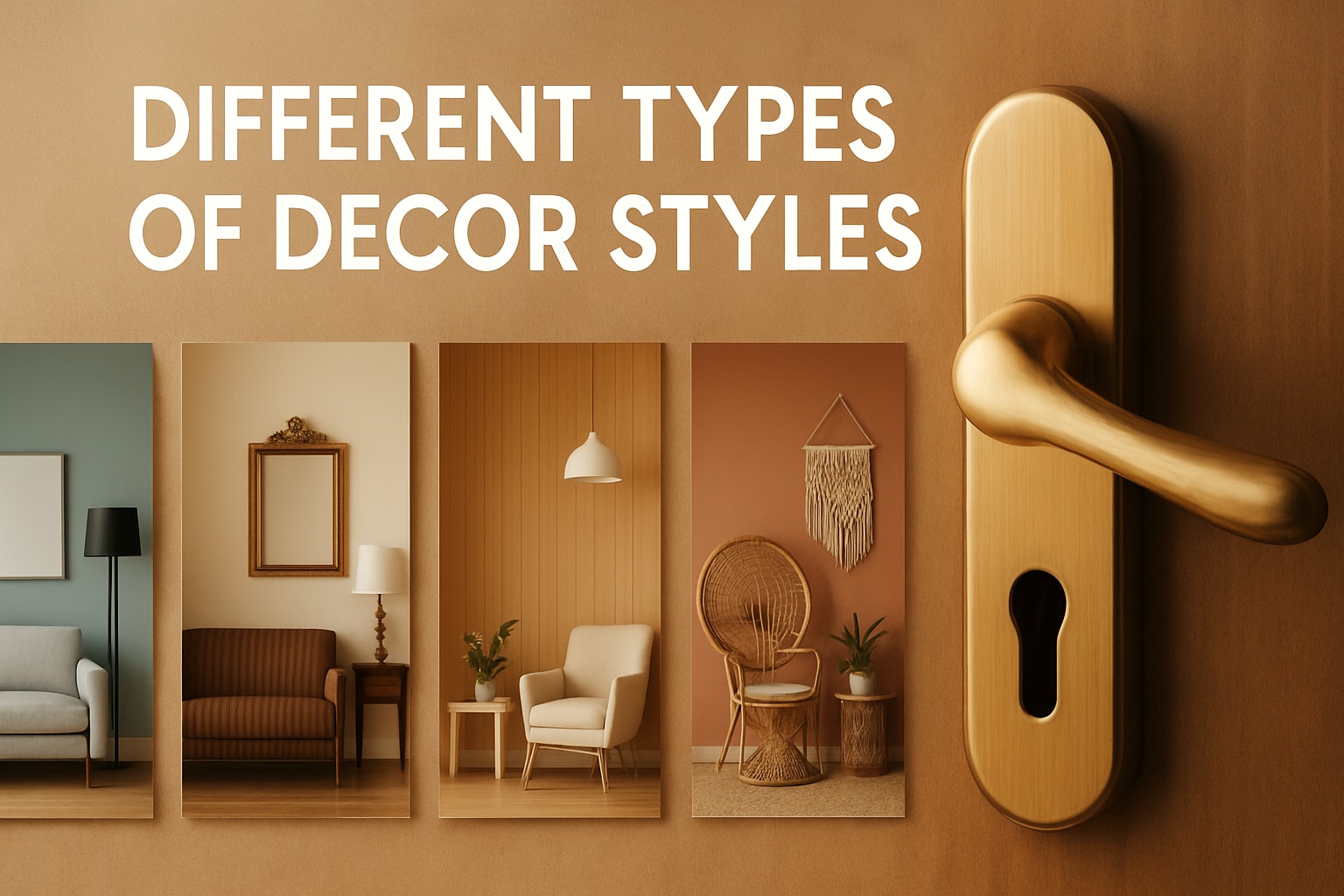
Share:
New Design Guide: Transform Your Space in 2025
Stunning Designs in Wood to Elevate Your Home in 2025